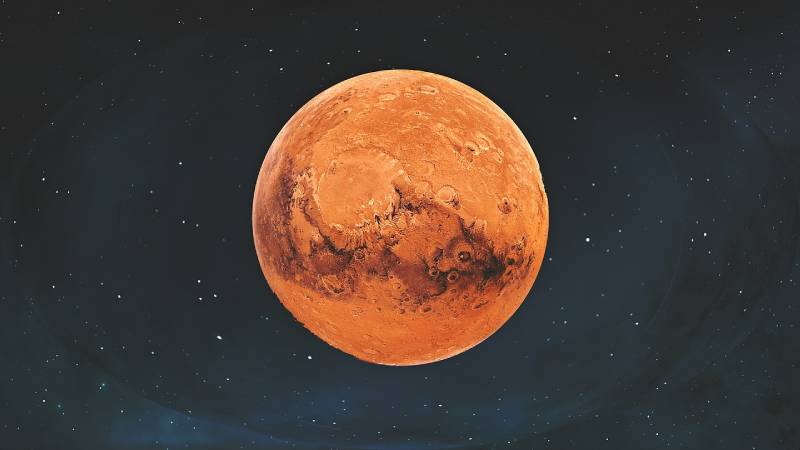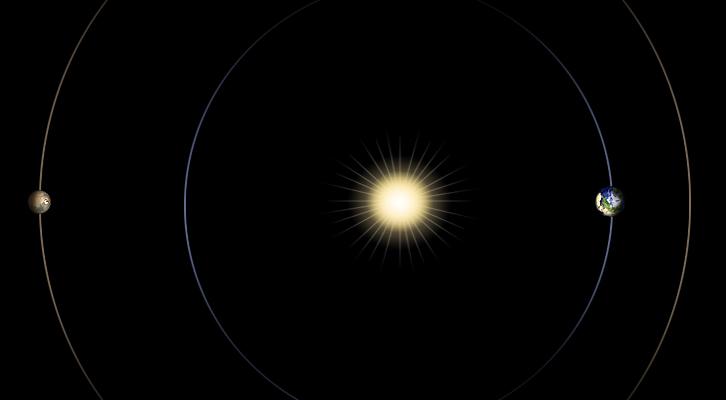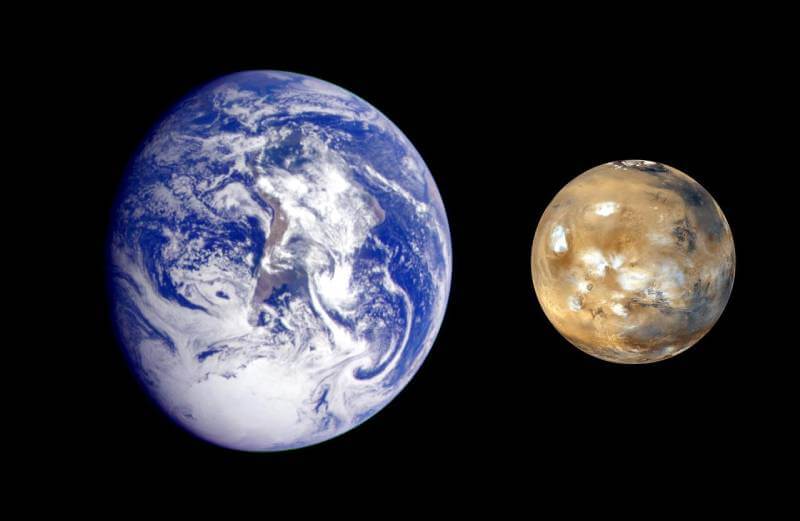Unlike other distant celestial objects, you should be able to spot Mars when you go outside and look up, depending on your lighting conditions and local weather. However, seeing Mars using a telescope is easier than seeing it using our naked eyes. Like other planets, Mars orbits the Sun in an elliptical path, which is an elongated, slightly squashed shape – not a perfect circle. This attribute is important as it is responsible for how we get to see Mars from Earth. Additionally, Earth takes about two trips around the Sun in the time Mars takes to go on one round trip. Therefore, the two planets can be on opposite sides of the Sun; sometimes, the Earth may catch up with the moon, and other times, it may leave the moon by far.
Mars Orbit and Visibility
Roughly every 26 months, Mars reaches a significant point in its orbit called “opposition.” At this point, Mars and the Sun are known to be on the opposite sides of Earth, which creates a unique alignment, thus alternating between appearing faint or bright in the sky. This is when Mars is at its closest approach to our planet in its elliptical orbit. During opposition, this alignment is important when you observe Mars from Earth. So what happens?

Heightened Brightness and Size
During opposition, Mars becomes more apparent in size and brightness in our sky. It becomes significantly bright, thus outshining many stars. It appears larger when looked at under telescopes. The increased brightness is because Mars reflects more sunlight toward Earth because of its alignment with the Sun.
The Reddish Hue
The reddish appearance of Mars, where the infamous “the red planet” came from, becomes even more pronounced during opposition. The increased reflection from the Sun gives Mars that fiery glow, making it easily recognizable.
The Surface Features
During opposition, the proximity of Mars allows observers with even the tiniest telescopes to discern some of its surface attributes. See, features like dark markings and polar ice caps like the famous Sytris Major become even more visible, giving watchers a glimpse into the Martian landscape.
Mars is Hidden From The View
You may miss Mars sometimes! There is a point in Mars’ orbit called a conjunction on the flip side of the celestial coin. This happens when Mars is positioned on the far side of the Sun relative to Earth. At this point, Mars and Sun are in the same general direction as observed from Earth. Consequently, Mars gets hidden behind the brilliance of the Sun; this is when we can’t see Mars at all. Mars’s visibility is cyclical, alternating between being easily seen during opposition and hidden during conjunction.
The Close Approach
Now, there’s when Mars is closest to Earth in its orbit – called close approach. This is the best time to go to Mars due to the proximity. For instance, in 2022, Mars was about 50.6 million miles (81.5 million kilometers) away. Mars is visible for several weeks during close approach. But, as time goes on, it starts to appear fainter. This period often aligns with opposition, making it the best time to see Mars. At the beginning of 2023, Mars was super bright during 2022 opposition – where Mars, Earth, and the Sun were aligned perfectly, making Mars bright for us to see.

However, as Earth kept moving in its path around the Sun, Mars looked less bright. By August 2023, Mars had faded and wasn’t as bright. You could notice the moon on the Western side of the sky, even though it is. Also, if you looked up on August 18 and 19, you’d have noticed Mars next to the moon, which looked pretty nice. Remember, the brightness on Mars changes in a pattern, and we only get to see it around every two Earth years when opposition happens. Around October 2023, Mars will disappear because of the Sun’s bright light. Then, on November 18, it will go behind the Sun; we won’t see it until early 2024.
With the way Mars and Earth move around the Sun, it only means that not all close encounters are similar. Some close encounters are even rarer than others. As mentioned earlier, the paths are not a perfect circle; hence, Earth and Mars can never have perfectly circular orbits. , Otherwise, the distance would always remain the same. The closest Mars has been to Earth recently occurred in 2003, and guess what? It won’t come that close again until 2287!
Conclusion
If you missed all those Mars appearances, don’t worry; be on the lookout for when it will be the brightest again in January 2025! With the knowledge of where and when to look, along with basic equipment like a telescope or binoculars, anyone can catch the Red Planet. With advancements in space exploration and technology, our ability to observe and understand Mars will improve, further increasing our fascination with each mission.

